How to attract woodpeckers – 3 wildlife-friendly tips to try in your backyard
Welcome these beautiful birds into your yard with this pro advice
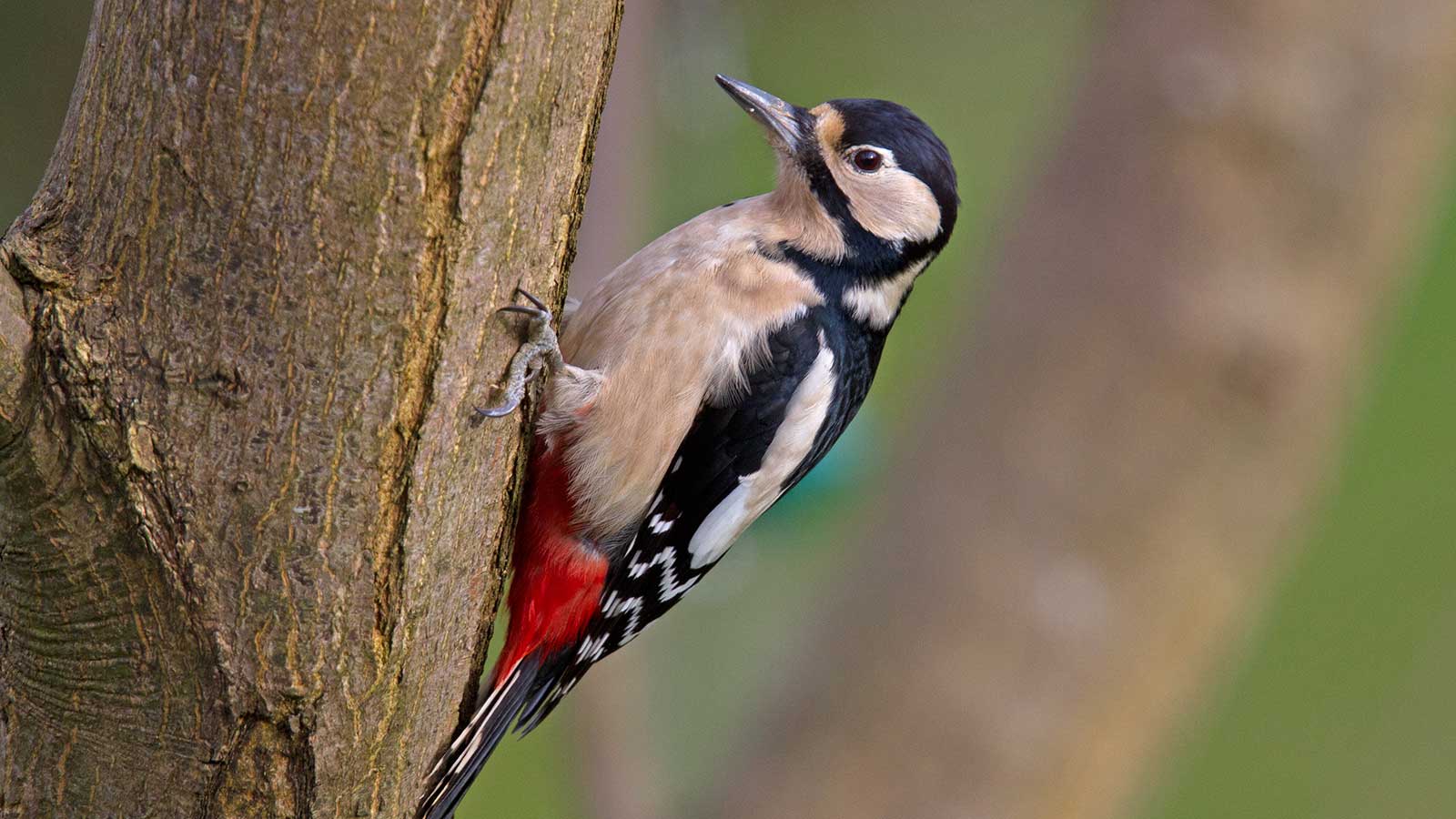

There are 23 types of woodpeckers in the US, including downy woodpeckers and red-bellied woodpeckers. They are best known for the distinctive drumming noise they make with their beaks, and many, but not all, can be spotted from their bright red caps and black and white feathers.
Unfortunately, some species of woodpecker are under threat due to habitat loss and pesticide use. In 2021, the ivory-billed woodpecker was declared extinct by The US Fish and Wildlife Service. Making your yard more wildlife-friendly is a good way to help support these feathered friends and your local ecosystem. But that's not the only benefit.
Rocky Trifari, a wildlife expert and operator of The Rocky Safari blog, notes how they also offer a natural form of pest control. Plus, they're simply fascinating to watch, he says. In fact, Rocky hails woodpeckers as one of his favorite bird species. 'The pattern on the wings is quite beautiful, as is the way they flap their wings while flying.'

Rocky Trifari is a US-based travel expert who operates The Rocky Safari – a website aimed at aspiring travelers, animal lovers, and bird enthusiasts. It is one of the fastest-growing sources of information online about long-term slow travel, wildlife conservation, and cultural preservation.
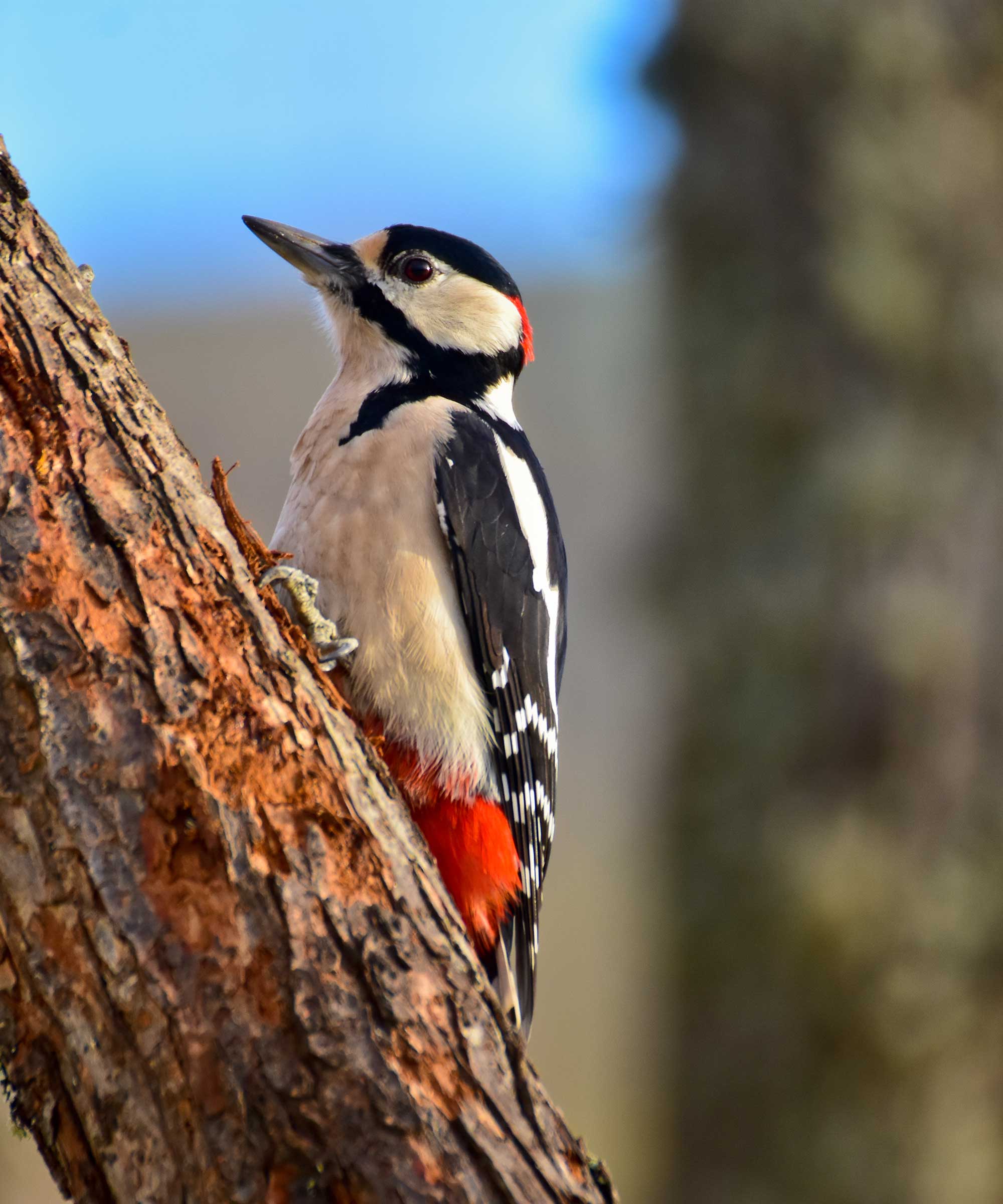
The great spotted woodpecker is a widely-spread species
Attracting woodpeckers to your yard
Although woodpeckers are beautiful and interesting birds, it's worth noting that they are noisy and can be destructive if they start drilling into the side of your house. Because of this, some homeowners actively seek ways to get rid of woodpeckers.
However, ensuring there are food sources and places for shelter in your backyard can discourage them away from buildings. You can also add deterrents, such as reflective streamers, to the areas you don't want them to be.
Generally, their drilling won't cause any real harm to healthy trees. In fact, they are more attracted to dead trees or those that already have a pest infestation.
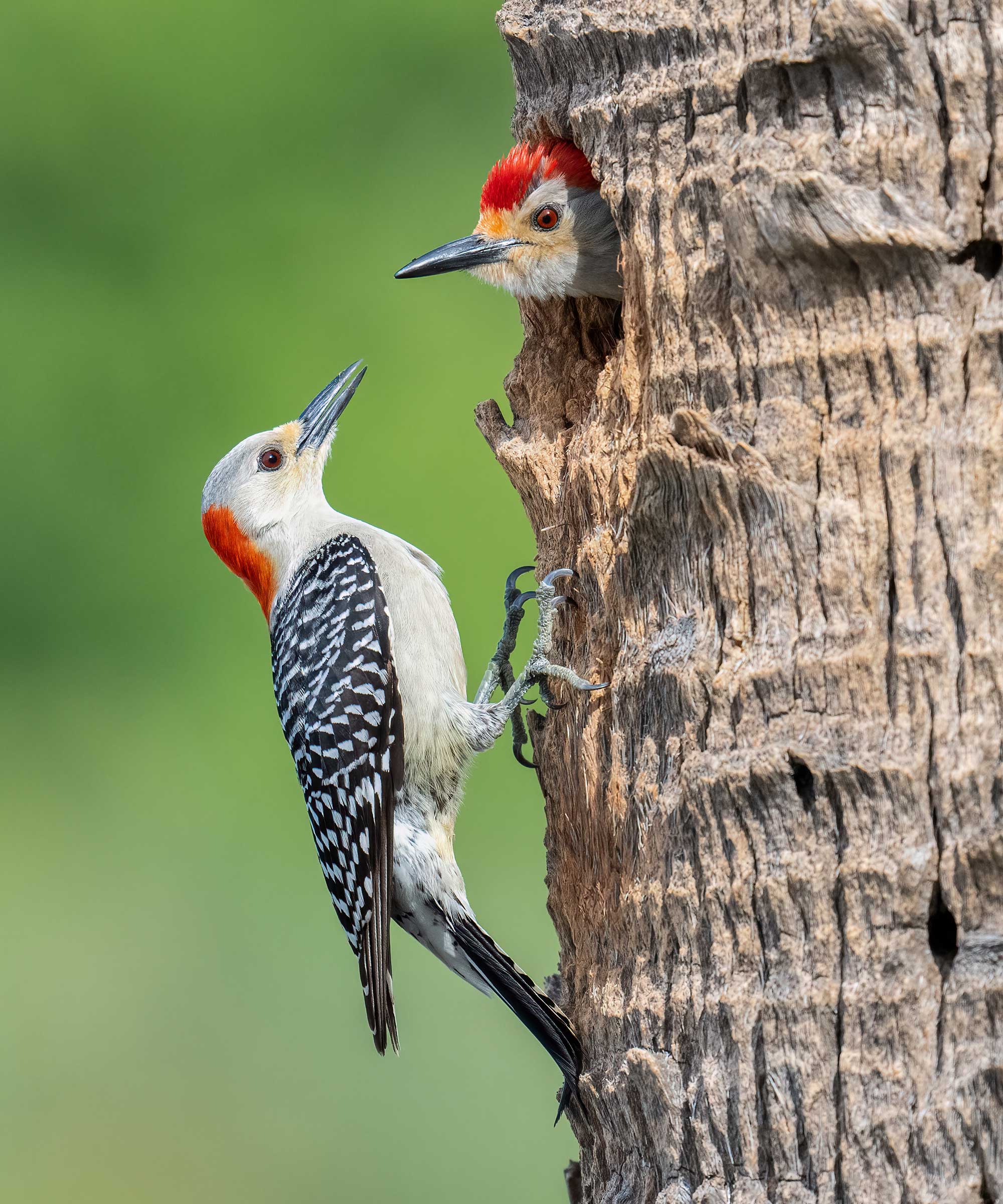
Red-bellied woodpeckers are spotted across the east of America
1. Provide a suitable source of food
'In my personal experience, I’ve had the most luck attracting woodpecker species to my yard by providing suet,' Rocky says. However, he adds that you can also attract them with a variety of bird seeds, peanut butter, and unsalted peanuts.
Providing a variety of bird feeders can be incredibly helpful, he continues. 'Suet feeders that hang from trees seem to be a popular choice among many types of woodpeckers.' They also enjoy platform feeders and tube feeders, he says.
This Kingsyard recycled plastic suet bird feeder from Amazon is a good option, and features a tail prop area for woodpeckers to comfortably rest their tails as they eat.
Set your feeder up in a peaceful location away from your house or other exterior buildings. You may need to take steps to protect bird feeders from squirrels, such as installing a squirrel baffle.
Planting native fruit-bearing trees and shrubs, such as cherries or blackberries, can also help to attract these birds, says Ben Team of FootstepsInTheForest.com.

Peanuts can attract these feathered friends
2. Give them somewhere to shelter
'Nesting boxes and dead trees are excellent nesting positions for woodpeckers,' says Rocky Trifari. 'By having these locations available, you increase the odds that one may choose to make your yard their home.'
Nest boxes are best placed 8-12ft high, in a quiet spot. Add a layer of wood chips inside the box to provide nesting material. This BestNest classic woodpecker house, available from Amazon, has been awarded 'Amazon's Choice' and can be attached to a tree or a sturdy post.
'Even if the birds are not nesting, they still may choose to reside in your yard if you have a sufficient selection of native trees and shrubs,' Rocky continues. 'They like these options because they provide coverage for safety as well as comfortable perching spots.'
Top tip: Large nesting boxes can also be used to attract owls to your backyard.
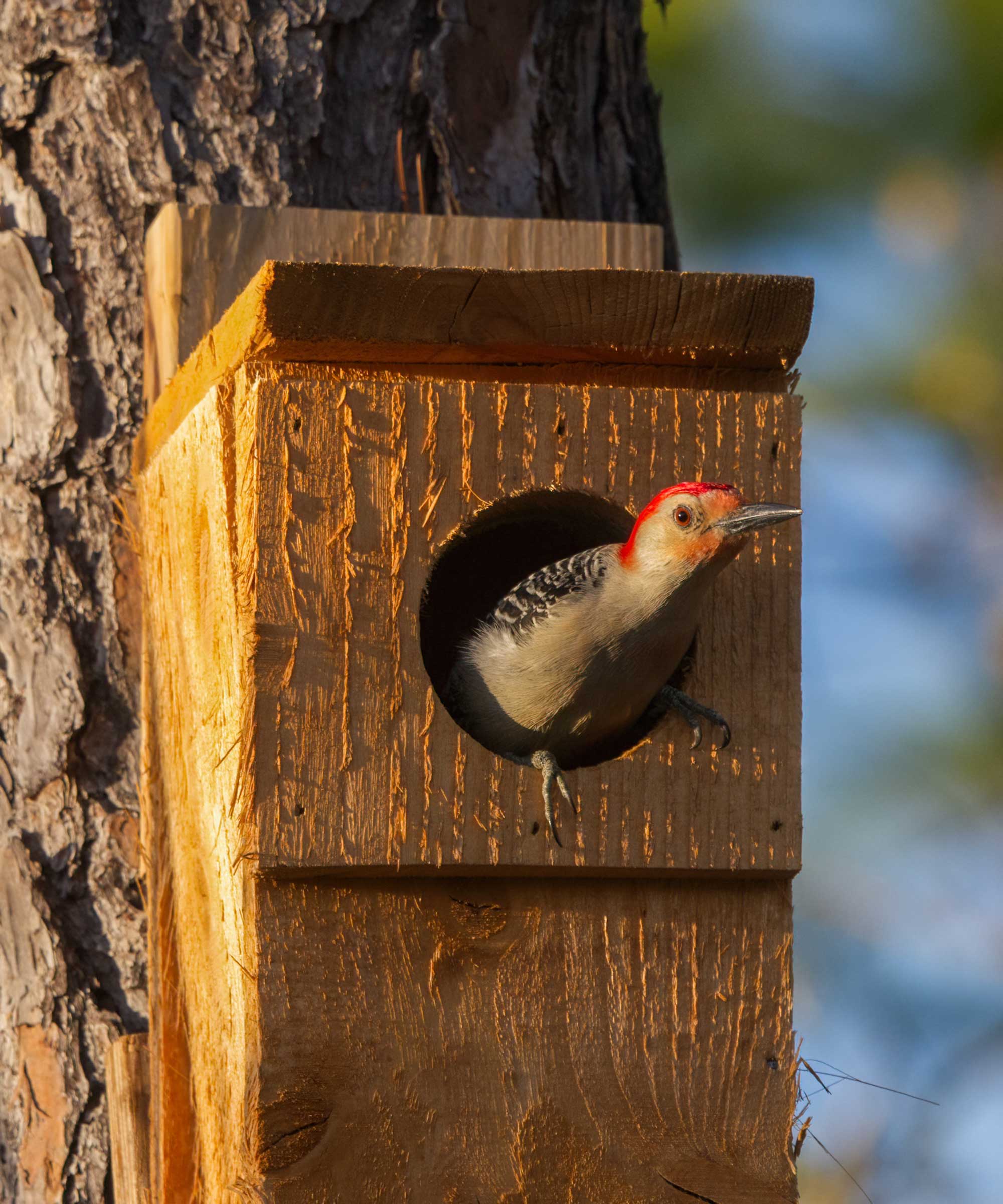
A nesting box can deter visiting woodpeckers from boring holes in your trees and house
3. Install a bird bath
Rocky says that a small bird bath or pond is a necessity for survival and could attract woodpeckers, as well as other birds and small animals who all need access to water for drinking and bathing.
Even a small water feature can be helpful. All will add aesthetic appeal and sensory benefits to a backyard, too, and will also attract dragonflies.
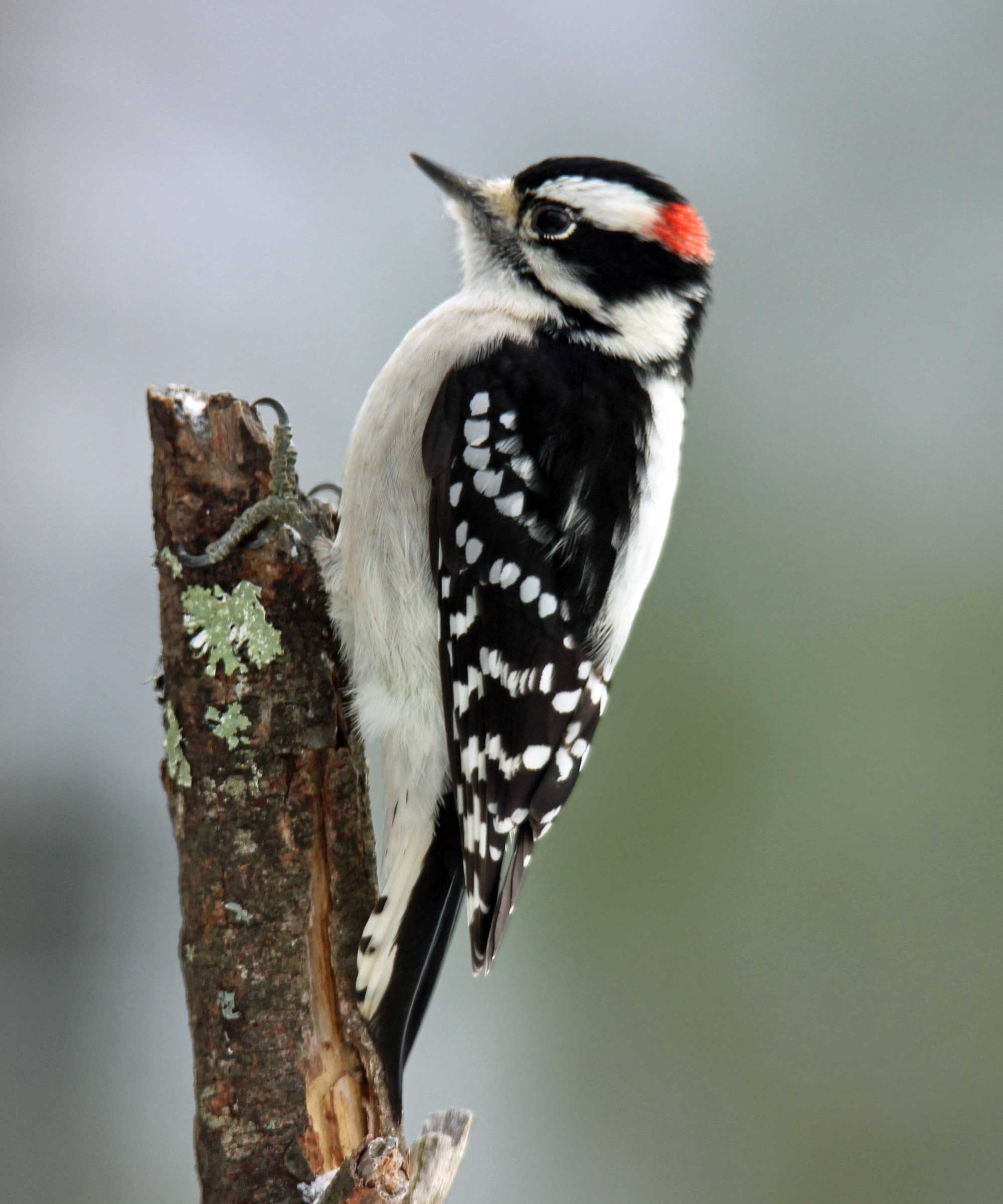
Downy woodpeckers are small and commonly sighted across most of North America
FAQs
Are woodpeckers dangerous?
Woodpeckers are generally not a threat to humans, although they may act aggressively if they feel threatened. Like all wild animals, it's best to admire them from afar.
When are woodpeckers most active?
You are most likely to see (and hear) woodpeckers during their mating season, which is typically in spring.
They are diurnal, which means they roost at night. Early morning is a good time to try and spot them.
As well as woodpeckers, why not welcome hummingbirds to your yard, too? Putting up a hummingbird feeder is a great way to attract them – and you can even make hummingbird food yourself in just a few simple steps.
Sign up to the Homes & Gardens newsletter
Design expertise in your inbox – from inspiring decorating ideas and beautiful celebrity homes to practical gardening advice and shopping round-ups.

Holly started writing about gardening five years ago, and she is a regular contributor to Homes & Gardens. She has also written many gardening features for Woman & Home and Real Homes, too. She has previous experience as a professional gardener, where she helped to plant and maintain private gardens. Holly has also looked after allotment plots over the years and loves to grow her own flowers and veggies from seed. In her spare time, she enjoys visiting local gardens, botanical drawing, and tending to her ever-growing collection of houseplants.
-
 I tried the baking soda trick to quickly and naturally clean my outdoor rug – it’s now set for Easter outdoor hosting
I tried the baking soda trick to quickly and naturally clean my outdoor rug – it’s now set for Easter outdoor hostingBaking soda is perfect for lifting dirt and debris
By Eve Smallman
-
 Drew Barrymore's striped sofa is her most elegant design to date – it oozes East Hampton elegance in time for summer 2025 (and is under $384)
Drew Barrymore's striped sofa is her most elegant design to date – it oozes East Hampton elegance in time for summer 2025 (and is under $384)This subtly striped linen sofa anchors any living room while feeling light and casual – it looks so much more expensive than its price tag
By Megan Slack